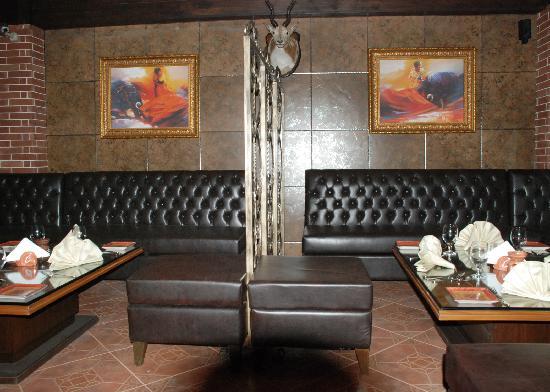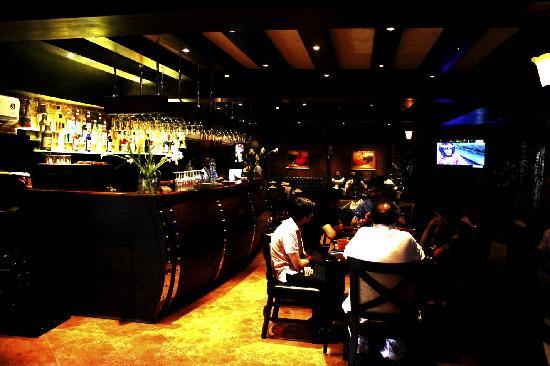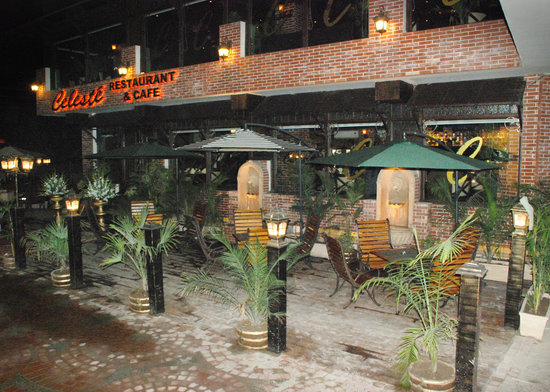How to install the app on iOS
Follow along with the video below to see how to install our site as a web app on your home screen.
Note: This feature may not be available in some browsers.
You are using an out of date browser. It may not display this or other websites correctly.
You should upgrade or use an alternative browser.
You should upgrade or use an alternative browser.
Pictures from cities: Peshawar
- Thread starter U-571
- Start date
Omar1984
ELITE MEMBER

- Joined
- Sep 12, 2008
- Messages
- 12,296
- Reaction score
- 0
Peshawar before Independence:



Islamia College was opened on October 1 1913 and students were admitted for the first year and third year classes only. The first student to get enrolled in the college was Sahibzada Khurshid (Nawab Sahib's cousin and whom he had raised as a son). Sahibzada Khurshid later on became the Governor of NWFP in 1949. At the close of the year, the number of enrollment had reached 33. Initially, the college had ten members of teaching staff, one clerk, one accountant, and two hostels, i.e., Qaiyum Manzil and Hardinge Hostel. Mr. L. Tipping was the first Principal. Allama Mashriqi was the vice principal and the professor of mathematics, and Maulana Qutb Shah as the Dean of Theology.







Islamia College was opened on October 1 1913 and students were admitted for the first year and third year classes only. The first student to get enrolled in the college was Sahibzada Khurshid (Nawab Sahib's cousin and whom he had raised as a son). Sahibzada Khurshid later on became the Governor of NWFP in 1949. At the close of the year, the number of enrollment had reached 33. Initially, the college had ten members of teaching staff, one clerk, one accountant, and two hostels, i.e., Qaiyum Manzil and Hardinge Hostel. Mr. L. Tipping was the first Principal. Allama Mashriqi was the vice principal and the professor of mathematics, and Maulana Qutb Shah as the Dean of Theology.





russellpeters
FULL MEMBER

- Joined
- Oct 1, 2011
- Messages
- 438
- Reaction score
- 0
nice pictures..beautiful people.
Omar1984
ELITE MEMBER

- Joined
- Sep 12, 2008
- Messages
- 12,296
- Reaction score
- 0
Good to see Pathan people are still loyal to Pakistan. In spite of their hardships.
Yes Pakhtuns are patriotic Pakistanis which angers the haters of Pakistan that is why they pressure Pakistan to do military operations in North Waziristan so Pakhtuns can turn against Pakistan, but it will never happen. Pakhtuns freed half of Kashmir and made it part of Pakistan in 1947, never forget that. The most patriotic Pakistanis are Northern Pakistanis. And everyone is suffering from hardships in Pakistan these days not only Pakhtuns. We will see better days soon InshAllah
W.11
BANNED

- Joined
- Jan 20, 2011
- Messages
- 15,032
- Reaction score
- -32
- Country
- Location
What makes the Pashtuns so fiercely loyal to Pakistan? Is it their iman?
I do agree some of the best Pakistanis are North Pakistanis.
all pakistanis are loyal, all groups will say they are most loyal to the country, when non of them are because all bring their ethnicity into play before like pashtuns say afghans are their brothers no matter how traitor afghans are,punjabis will keep supporting their numbers and sindhis willpraise how beautiful sindhdesh and curse on urdu speakers to 'occupy' their inherited land
Omar1984
ELITE MEMBER

- Joined
- Sep 12, 2008
- Messages
- 12,296
- Reaction score
- 0
The Softer Side of Peshawar
By KAMILA SHAMSIE

A portion of the statue of a starving Buddha in the Peshawar Museum.
PESHAWAR, Pakistan — Foreign reporters coming to Pakistan are often required to undergo survival training to prepare them for kidnappings, explosions and walking through mine fields. They might be better served by courses teaching them to ward off the one question that will rain upon them throughout their stay in the country: why don’t you do more to project the “soft image” of Pakistan?
For a country understandably frustrated by the one-dimensional view of it held by the rest of the world, the easiest target for this frustration is the foreign reporter, that intermediary between Us and Them. At the recently concluded Karachi Literature Festival, the New York Times reporter Declan Walsh spoke with admirable restraint about the lightning-fast rotations of the news cycle in Pakistan and the difficulty of finding time and space to write about other things than rumored coups and contempt cases against the prime minister, disappearances and political scandals. All this is true. Another way to put it might have been: it’s not the job of a news reporter to be a cultural correspondent.
Because it is, of course, through the lens of culture that a country’s soft side can be seen; it is through music and art and literature that another story of this nation might be created to mediate that of a country shrouded in a burqa of extremism and militancy.
If there’s one city in Pakistan that could do especially with more projecting of its soft image, it’s Peshawar. The place has long turned the imagination feverish. To Rudyard Kipling, it was a “city of evil countenances.” To journalists stationed here during the Afghan-Soviet war of the 1980s, it was a “hotbed of spies.” More recently it has become famed for accommodating militants. This feverishness isn’t confined to foreigners: friends and relatives in Karachi all warned me to “be careful” when I told them I planned to visit Peshawar; this, despite the fact that violence in Karachi regularly outstrips violence here.
But talk about the city to archaeologists and historians, and an entirely different kind of fever might take hold of you. One of South Asia’s oldest living cities, Peshawar is renowned for the Gandhara art excavated nearby — pieces that reveal an astonishing syncretism: Buddhist sculptures showing Hindu gods, Greek mythological figures (Atlas is a favorite), Persian columns and other influences besides. And the Peshawar Museum has the world’s largest and most breathtaking collection of Gandhara art.
Who sees it, though? The former assistant curator of the museum told me that foreigners hardly visit Peshawar anymore because of security concerns. And locals simply aren’t that interested. Perhaps living in a country where history is something to be rewritten rather than preserved plays some part in this indifference. I couldn’t get an exact figure for annual visitors to the museum but was told by people who work there that it is certainly far lower than 54,511, the number of visitors in 1915-6, when the population of Peshawar was about one-tenth of its present size.
If foreign visitors are unwilling and locals uninterested, surely some artifacts from the museum might be exhibited abroad? Sadly, no. The much-praised exhibition of Gandhara art at the Asia Society in New York, which opened last August, included pieces from the museums in Lahore and Karachi, but none from Peshawar Museum. Security concerns were invoked; no one even contacted its curator. Again, on the subject of security, it may be worth mentioning that far more people were killed in Karachi than Peshawar last year.
The loss that arises from this neglect is immense. In one corner of the Gandhara gallery are the fragments of a starving Buddha. The face, detached from the body, has lost the tip of its nose, but enough remains to make it a contender, if not the outright winner, for greatest piece of stonework carved by human hands. The thin lips appear parched, a fold of skin creases the face, and when you lean in toward the deep hollows of the eyes, the Buddha’s pupils fix on you with an expression of such suffering you can’t hold his gaze for very long.
Some days — some years — it’s hard to think of a more apt symbol for Pakistan than this 1,800-year-old sculpture of beauty and pain. The world doesn’t need to see Pakistan’s soft image; it needs to see its human face.
Kamila Shamsie is the author of five novels, most recently “Burnt Shadows,” which was shortlisted for the Orange Prize for Fiction. She grew up in Karachi and now lives in London.
Pakistan's Culture Bolsters the Country's Soft Image - NYTimes.com
By KAMILA SHAMSIE

A portion of the statue of a starving Buddha in the Peshawar Museum.
PESHAWAR, Pakistan — Foreign reporters coming to Pakistan are often required to undergo survival training to prepare them for kidnappings, explosions and walking through mine fields. They might be better served by courses teaching them to ward off the one question that will rain upon them throughout their stay in the country: why don’t you do more to project the “soft image” of Pakistan?
For a country understandably frustrated by the one-dimensional view of it held by the rest of the world, the easiest target for this frustration is the foreign reporter, that intermediary between Us and Them. At the recently concluded Karachi Literature Festival, the New York Times reporter Declan Walsh spoke with admirable restraint about the lightning-fast rotations of the news cycle in Pakistan and the difficulty of finding time and space to write about other things than rumored coups and contempt cases against the prime minister, disappearances and political scandals. All this is true. Another way to put it might have been: it’s not the job of a news reporter to be a cultural correspondent.
Because it is, of course, through the lens of culture that a country’s soft side can be seen; it is through music and art and literature that another story of this nation might be created to mediate that of a country shrouded in a burqa of extremism and militancy.
If there’s one city in Pakistan that could do especially with more projecting of its soft image, it’s Peshawar. The place has long turned the imagination feverish. To Rudyard Kipling, it was a “city of evil countenances.” To journalists stationed here during the Afghan-Soviet war of the 1980s, it was a “hotbed of spies.” More recently it has become famed for accommodating militants. This feverishness isn’t confined to foreigners: friends and relatives in Karachi all warned me to “be careful” when I told them I planned to visit Peshawar; this, despite the fact that violence in Karachi regularly outstrips violence here.
But talk about the city to archaeologists and historians, and an entirely different kind of fever might take hold of you. One of South Asia’s oldest living cities, Peshawar is renowned for the Gandhara art excavated nearby — pieces that reveal an astonishing syncretism: Buddhist sculptures showing Hindu gods, Greek mythological figures (Atlas is a favorite), Persian columns and other influences besides. And the Peshawar Museum has the world’s largest and most breathtaking collection of Gandhara art.
Who sees it, though? The former assistant curator of the museum told me that foreigners hardly visit Peshawar anymore because of security concerns. And locals simply aren’t that interested. Perhaps living in a country where history is something to be rewritten rather than preserved plays some part in this indifference. I couldn’t get an exact figure for annual visitors to the museum but was told by people who work there that it is certainly far lower than 54,511, the number of visitors in 1915-6, when the population of Peshawar was about one-tenth of its present size.
If foreign visitors are unwilling and locals uninterested, surely some artifacts from the museum might be exhibited abroad? Sadly, no. The much-praised exhibition of Gandhara art at the Asia Society in New York, which opened last August, included pieces from the museums in Lahore and Karachi, but none from Peshawar Museum. Security concerns were invoked; no one even contacted its curator. Again, on the subject of security, it may be worth mentioning that far more people were killed in Karachi than Peshawar last year.
The loss that arises from this neglect is immense. In one corner of the Gandhara gallery are the fragments of a starving Buddha. The face, detached from the body, has lost the tip of its nose, but enough remains to make it a contender, if not the outright winner, for greatest piece of stonework carved by human hands. The thin lips appear parched, a fold of skin creases the face, and when you lean in toward the deep hollows of the eyes, the Buddha’s pupils fix on you with an expression of such suffering you can’t hold his gaze for very long.
Some days — some years — it’s hard to think of a more apt symbol for Pakistan than this 1,800-year-old sculpture of beauty and pain. The world doesn’t need to see Pakistan’s soft image; it needs to see its human face.
Kamila Shamsie is the author of five novels, most recently “Burnt Shadows,” which was shortlisted for the Orange Prize for Fiction. She grew up in Karachi and now lives in London.
Pakistan's Culture Bolsters the Country's Soft Image - NYTimes.com
Similar threads
- Replies
- 0
- Views
- 90
- Replies
- 0
- Views
- 81
- Replies
- 2
- Views
- 794


































